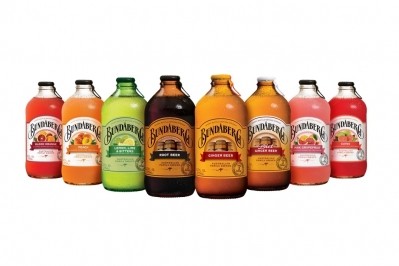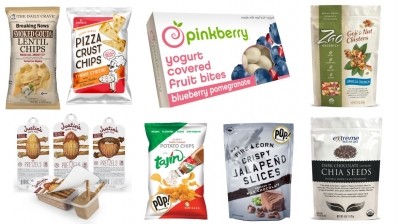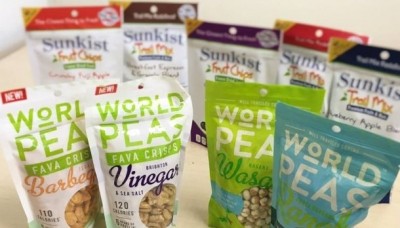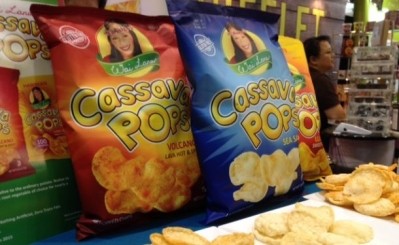Loacker, Glico, among non-US companies that want a bigger piece of (the apple) pie
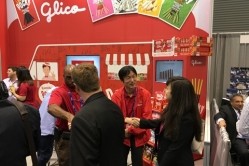
“Everybody wants to sell in the United States,” Ulrich Zuenelli, President of A. Loacker A.G., told FoodNavigator-USA at the Sweets and Snacks Expo 2016 in Chicago. Numbers clearly show why—Nielsen found that North Americans spent $124 million on snacks, and a Mintel survey on US consumers found that nearly 94% of Americans snack at least once a day.
Because of that, the 91-year old company based in the Italian Alps thought it’s only right to ramp up stateside sales efforts of its iconic wafers. Loacker’s products have been on US shelves since 1983 thanks to collaboration with three importers.
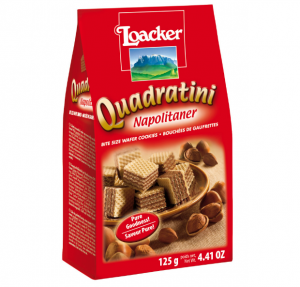
“But then we started to understand there was a consolidation of American trade—we thought it was very important for retailers to see that there is a commitment from us to really invest to the US market,” Zuenelli said. And what better way to show that commitment, and get closer to the playing field, than by integrating all US efforts in a newly established US office.
Getting in the zone
Loacker’s US sales office opened in New York City in 2014. “We affectionately say we’re a 90-year-old start-up in the States,” Crystal Black Davis, deputy to the president and vice president of marketing at Loacker USA said.
According to Davis, Loacker’s selection of products, square and rectangular milk chocolate wafers, is new to most American consumers. “So unlike in Europe, where this is a legacy brand where people grew up with [Loacker] since their childhood and they recognize the commercials, here in the States it’s an introductory angle we’re taking,” she said.
“We’re introducing this Italian product to a US palette that is starting to get more sophisticated,” she added. “There is a broader base of people who want more premium snacks and we fell right in line, the timing can’t be more perfect.”
Across the Pacific
A similar story can be found in the US expansion of Japanese brand Ezaki Glico’s Pocky Sticks. The 1960s chocolate-dipped cookie sticks, packaged in a throwback red box, started its journey in the US in Asian specialty grocery stores in 2003.
But Glico wants to start aggressively expanding its sales in the US and target a wider audience. According to Akitoshi Oku, president of Ezaki Glico USA Corporation, its initial stateside buyers were mostly Asian expatriates, Asian-Americans, or “Asian culture fans.” A truck painted Pocky-red traveling the Chicagoland made headlines, one way the US branch of the Japanese corporation is ramping up awareness.
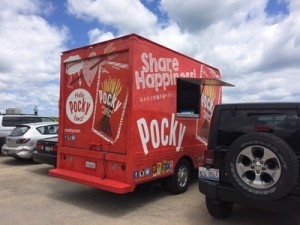
“Now we have been in Costco for five years,” Oku told FoodNavigator-USA. “The reaction has been very positive. We are the only kind that sells this kind of chocolate, most brands sell it in bars, or [cookies],” he added, saying that in the US, Glico’s products are the only sticks.
For the US market, Pocky sticks packaged in boxes with English text come in five flavors: plain biscuit-cookies dipped in Chocolate, Strawberry, Cookies and Cream, and Matcha, and a chocolate biscuit-cookie dipped in banana. At Costco, Pocky is placed with other sweet snacks, while other big-chain retailers like Walmart and Target stock them on specialty Asian shelves.
For those in the know, they can find a wider set of products offered by Glico that are imported from Japan and packaged with Japanese labels. These include the more premium dark chocolate, azuki bean, and chocolate dipped with crushed almonds, as well as the savory brand Pretz with flavors like Pizza and the Thai tom yum soup. “Hopefully in the future, we can expand these flavors to the US market,” Oku said.
Indulgence in a health-crazed nation
Though social media, the blogosphere and sales trends in sports nutrition may suggest that Americans are getting wary of indulgent snacks, the category is actually outpacing “healthier” options, IRi data showed. Both Oku and Zuenelli acknowledged that American consumers put more thought into going gluten-free or cutting sugar, but they don’t see this as a problem for their products.
“We bring to our consumers indulgence in a natural way,” Zuenelli said. The fact that they have only one facility—in the Dolomites by the Italian border with Austria, is a big marketing point for the company. “We tout that our ingredients are natural, we have no artificial additives—and that’s how the product always has been,” added Davis.
Another path both Loacker and Pocky are going down to market their indulgent snacks is portion control. Both products come in various sizes in packaging that is easy to reseal and store away. In fact, for Pocky, the 24 g of sugar per serving wasn't meant to be eaten by one person—sharing a box is a big part of their brand image.
“This red box, it communicates happy,” Oku said. “It is a universal message—and the sticks are a good way to make new friends. We made it easy to share, and to share happiness.”
